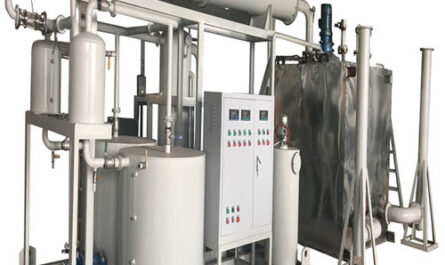The oil and gas industry generates a huge amount of waste during drilling operations. Effective drilling waste management is crucial to prevent environmental pollution and protect public health.
Types of Drilling Wastes
Drilling operations produce several types of wastes that require careful handling and disposal. Some of the major types of drilling wastes include:
Drilling Fluids and Muds: Drilling fluids, also known as drilling muds, are primarily used to lubricate and cool the drill bit during drilling operations. Various types of drilling muds like water-based muds, synthetic-based muds, and oil-based muds are used. These muds get contaminated with cuttings during the drilling process.
Drill Cuttings: Drill cuttings refer to the rock and soil fragments generated when the drill bit pulverizes the rock formations below the surface. Drill cuttings get mixed with and coated by drilling fluids during the drilling process.
Sanitary and Domestic Wastes: Sanitary and domestic wastes include sewage, grey water, food waste, paper, glass, etc. generated from people working on the drilling rigs and sites.
Equipment Wash Waste: Waste fluids and cuttings generated when drilling equipment is cleaned or washed.
Spills and Leftover Chemicals: Accidental spills of drilling muds, fluids, lubricants, etc. during storage, transfer or operations. Leftover chemicals that were not used completely.
Regulations for Drilling Waste Management
Various regulations have been established to ensure that drilling wastes are handled, stored, transported and disposed of in an environmentally safe manner. Some of the key applicable regulations include:
– The Resource Conservation and Recovery Act (RCRA) which regulates the handling, transportation, treatment, storage, and disposal of all types of solid and hazardous wastes.
– EPA guidelines for offshore drilling wastes which specify testing, segregation, transport and disposal standards for different waste types.
– Spill Prevention, Control and Countermeasure (SPCC) regulations which aim to prevent oil spills from tanks and pipelines into navigable waters.
– Clean Water Act and NPDES permit requirements for discharge of any pollutants into water bodies.
– Air emission standards for volatile organic compounds and hazardous air pollutants from hydrotest water, storage tanks, etc.
Best Practices for Drilling Waste Management
Adopting the following best practices can help operators safely manage drilling wastes:
Waste Categorization: Wastes should be properly characterized, classified and segregated based on their constituents and hazard levels. This enables proper handling and disposal.
Reduce, Reuse, Recycle: Technologies for reducing waste generation through mud recycling/conditioning, closed loop systems for pits, zero-discharge technologies, etc. should be adopted.
On-site Storage: Impervious liners, secondary containment, leachate collection for pits/tanks storing wastes prior to proper treatment and disposal.
Treatment and Disposal: Appropriate treatment like solids control, bioremediation or third-party disposal of wastes based on their nature – onshore commercial facilities, offshore injection wells, etc.
Record Keeping: Detailed manifest system to track waste from generation to final treatment/disposal and obtain necessary approvals from regulatory authorities.
Spill Contingency Planning: Emergency response plan with adequate equipment and trained personnel to promptly contain and cleanup any spills onsite.
With growing focus on environmental protection and sustainability, effective drilling waste management is a top priority for oil and gas operators. Adhering to applicable regulations and implementing industry-leading practices can help mitigate risks to the environment from these waste streams. Ongoing research on innovative treatment and recycling solutions is also crucial to promote circular economy principles in drilling operations.
*Note:
1. Source: Coherent Market Insights, Public sources, Desk research
2. We have leveraged AI tools to mine information and compile it




